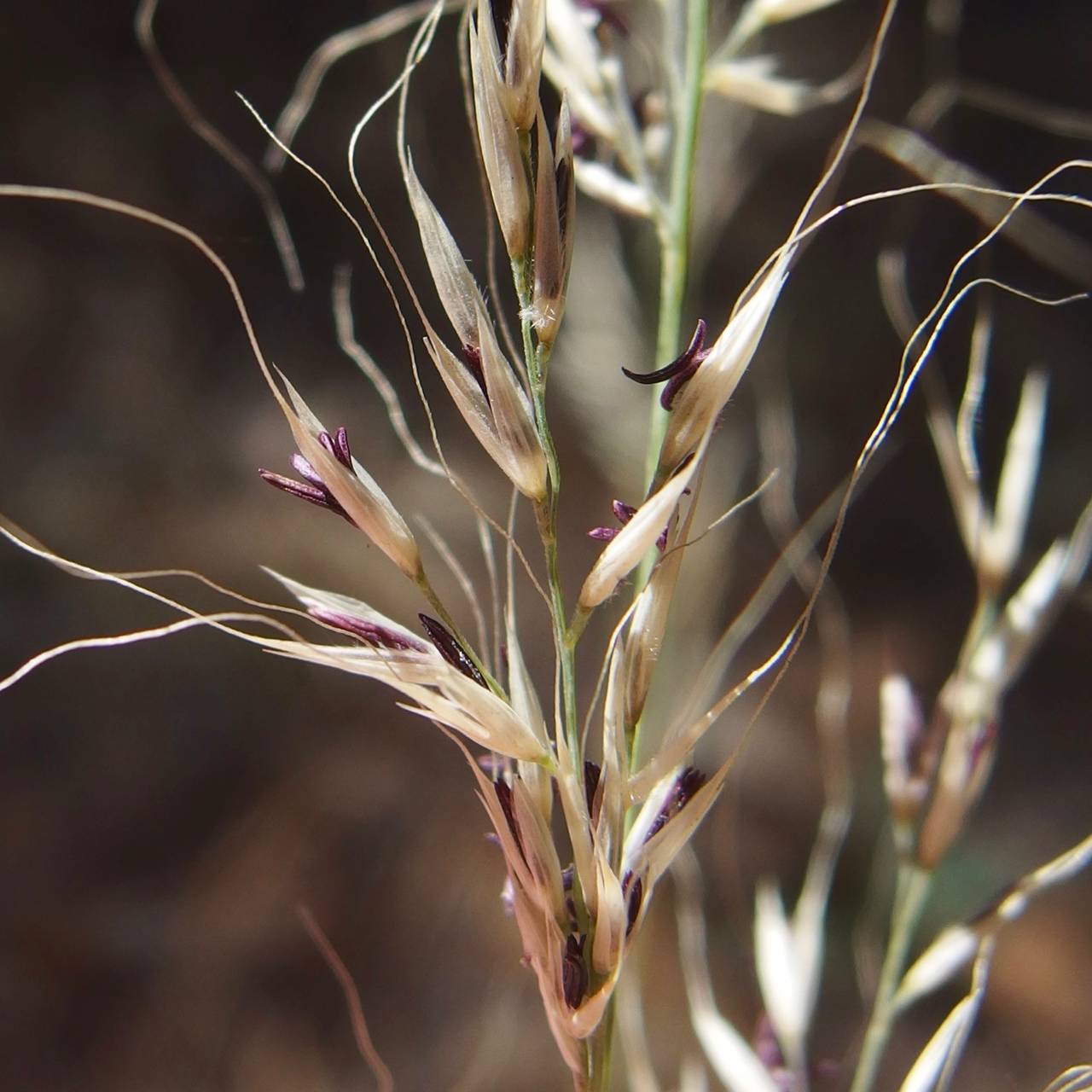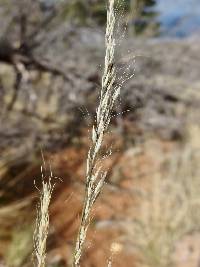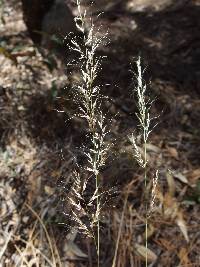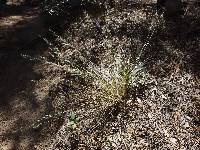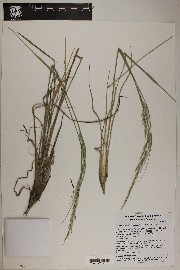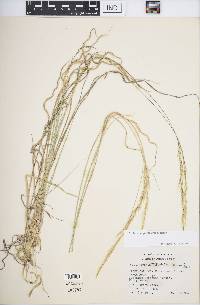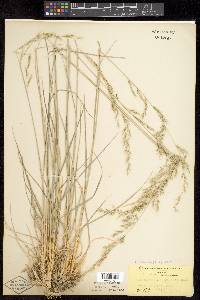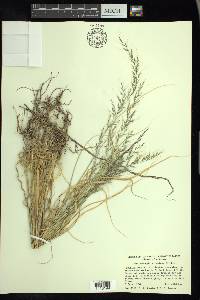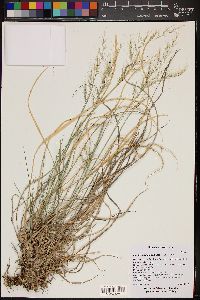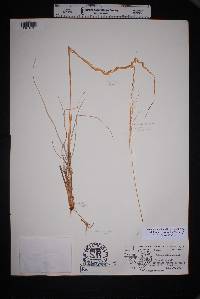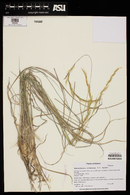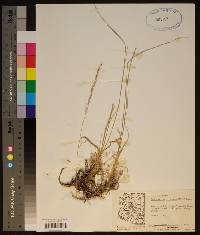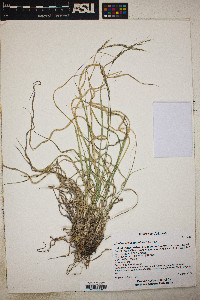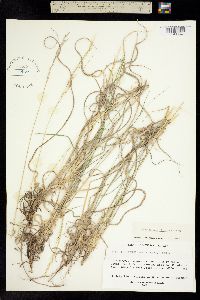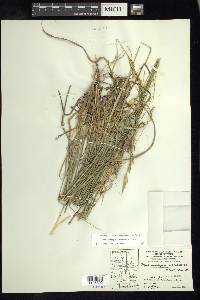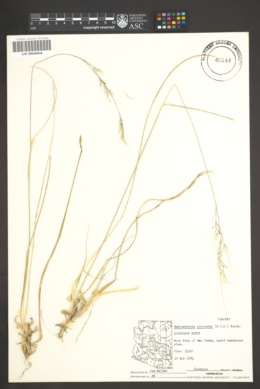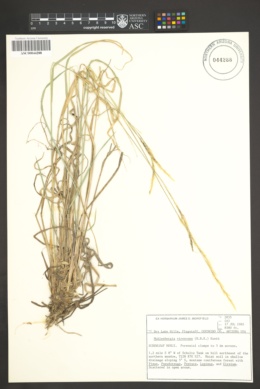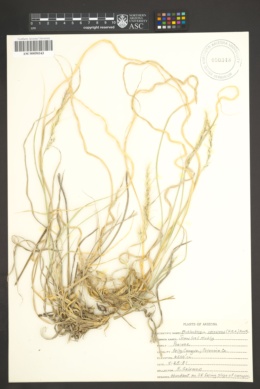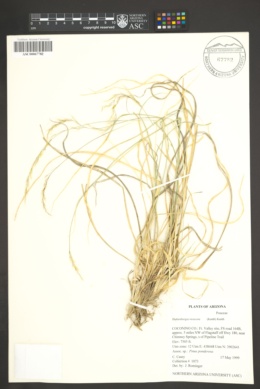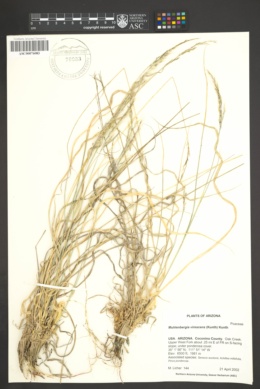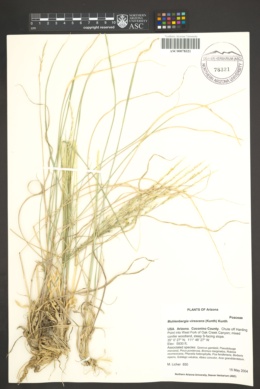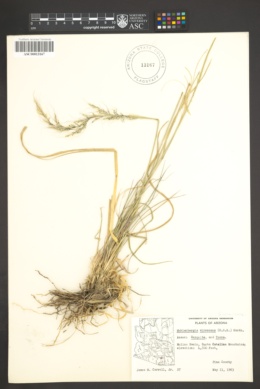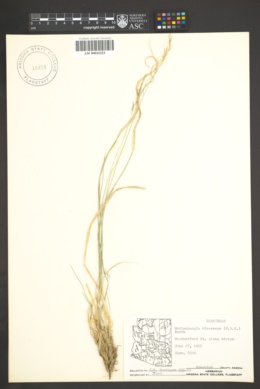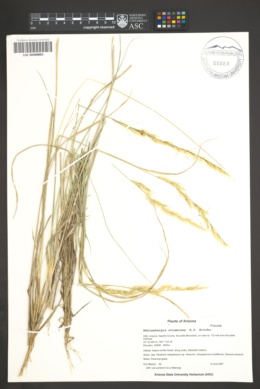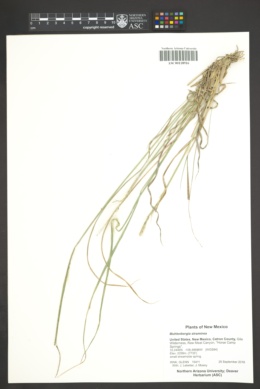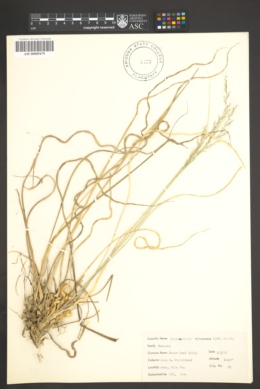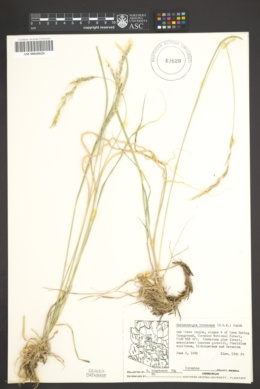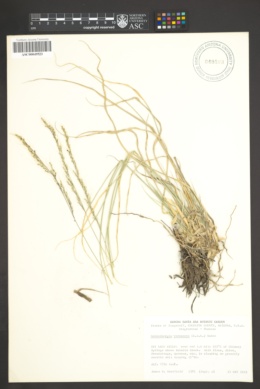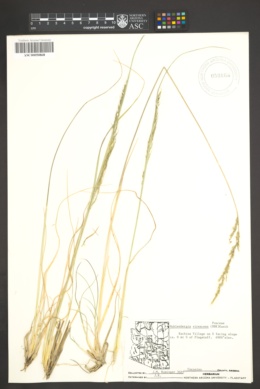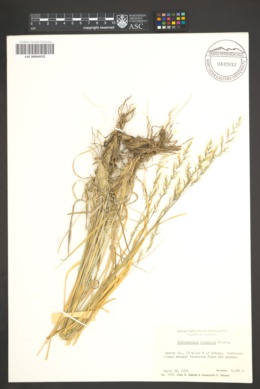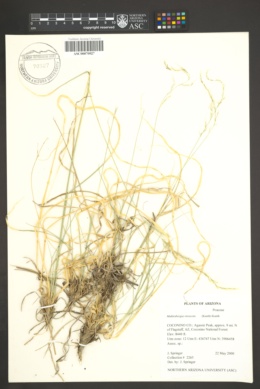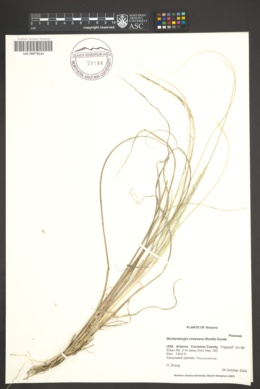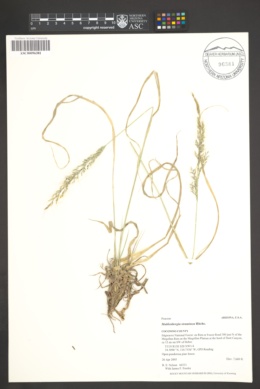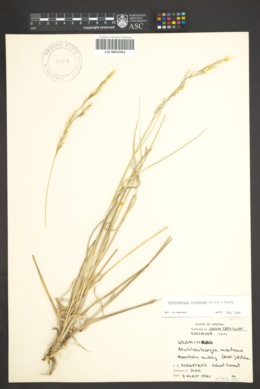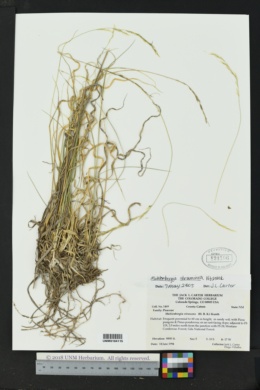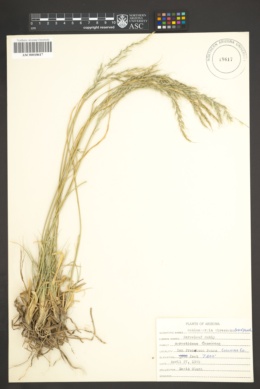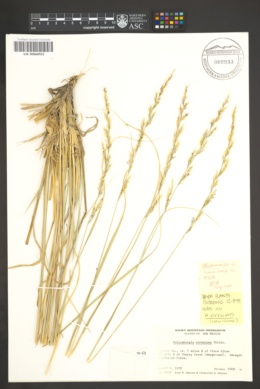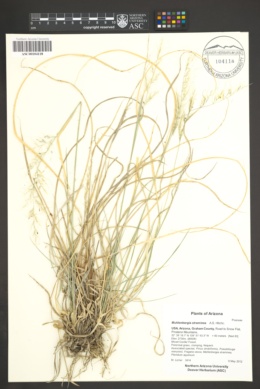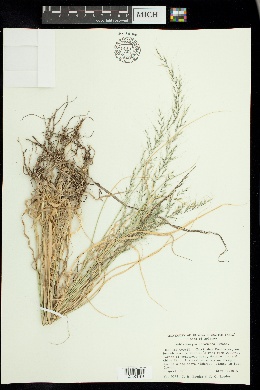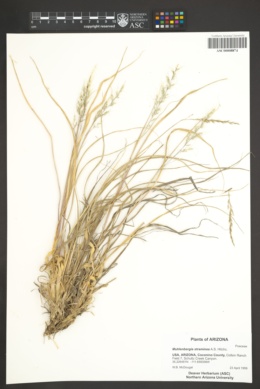Muhlenbergia straminea
|
|
|
|
Family: Poaceae
Screw-Leaf Muhly, more...Screwleaf Muhly
|
Plants perennial; cespitose. Culms 25-70 cm, erect, rounded near the base; internodes glabrous. Sheaths glabrous, stiff, becoming flattened, ribbonlike or papery, and conspicuously spirally coiled when old; ligules (6)10-20 mm, hyaline, acuminate, lacerate; blades 7-25 cm long, 1-4 mm wide, flat to involute, scabrous abaxially, spiculate adaxially. Panicles 8-25 cm long, 0.5-3 cm wide, not dense; primary branches 0.6-8 cm, appressed or diverging up to 30° from the rachises; pedicels 0.2-5 mm, scabrous. Spikelets 3.5-7 mm, yellowish to pale greenish. Glumes (3)3.5-6(7) mm, scabridulous, unawned or awn-tipped; lower glumes shorter than the upper glumes, 1-veined; upper glumes equaling or exceeding the florets, 3-veined, acuminate to acute, occasionally 3-toothed, awned, awns to 1.5 mm; lemmas 3.5-5.5(6) mm, lanceolate, pubescent on the lower 1/2 of the midveins and margins, hairs to 1 mm, apices scabrous, acuminate, awned, awns 12-27 mm, flexuous; paleas 3.5-5.5 mm, lanceolate, pilose between the veins, apices scabridulous, acuminate; anthers 2-3.5 mm, purple. Caryopses 1.9-2 mm, fusiform, light brown. 2n = unknown. Muhlenbergia straminea grows on rolling, rocky slopes, volcanic tuffs, canyon bottoms, and ridges, usually in open pine forests, at elevations of 1800-2600 m. It is known only from the southwestern United States. FNA 2003, Gould 1980 Common Name: screwleaf muhly Duration: Perennial Nativity: Native Lifeform: Graminoid General: Tufted perennial with stems 25-70 cm, erect, rounded near the base, sheaths not keeled but rounded near base, glabrous internodes, sheaths glabrous, stiff, becoming flattened and papery. Vegetative: Blades 7-25 cm, 1-4 mm wide, flat to involute, scabrous below, spiculate above, becoming conspicuously coiled like wood shavings with age, ligules 10-20 mm, thin, membranous, tapering to a slender tip as much as 8 mm long, broken off in age. Inflorescence: Contracted panicles 8-25 cm long, 0.5-3 cm wide, not dense, primary branches 0.5-8 cm, appressed or diverging up to 30 degrees from the rachises, bearing spikelets nearly to the base, pale yellow or bluish-green, spikelets 3.5-7 mm; glumes pale, unequal, minutely roughened, unawned or awn tipped, lower shorter than upper, upper equaling or exceeding the florets, 3-veined, acuminate to acute, occasionally 3-toothed, awned, awns to 1.5 mm; lemmas 3.5-5.5 mm, pubescent on lower half of midveins and margins, hairs to 1 mm, apices scabrous, acuminate, awned, awns 12-27 mm, flexuous. Ecology: Found on rocky slopes and ridges, often in open pine forests from 6,000-9,500 ft (1829-2896 m); flowers March-June. Notes: Difficult to distinguish from M. montana other than its flowering in early spring and its very tightly coiled old blades. The former actually has coiled leaves as well, but the distinctiveness of how tightly coiled this species- leaves are is hard to miss. For a period of time, M. straminea was lumped with Muhlenbergia virescens by various authors; Reeder & Reeder (1995) separated it again. Ethnobotany: Unknown Etymology: Muhlenbergia is named for Gotthilf Heinrich Ernst Muhlenberg (1753-1815) a clergyman and botanist from Pennsylvania; straminea means straw colored. Synonyms: None. Editor: SBuckley, 2010; SCarnahan 2023. |

